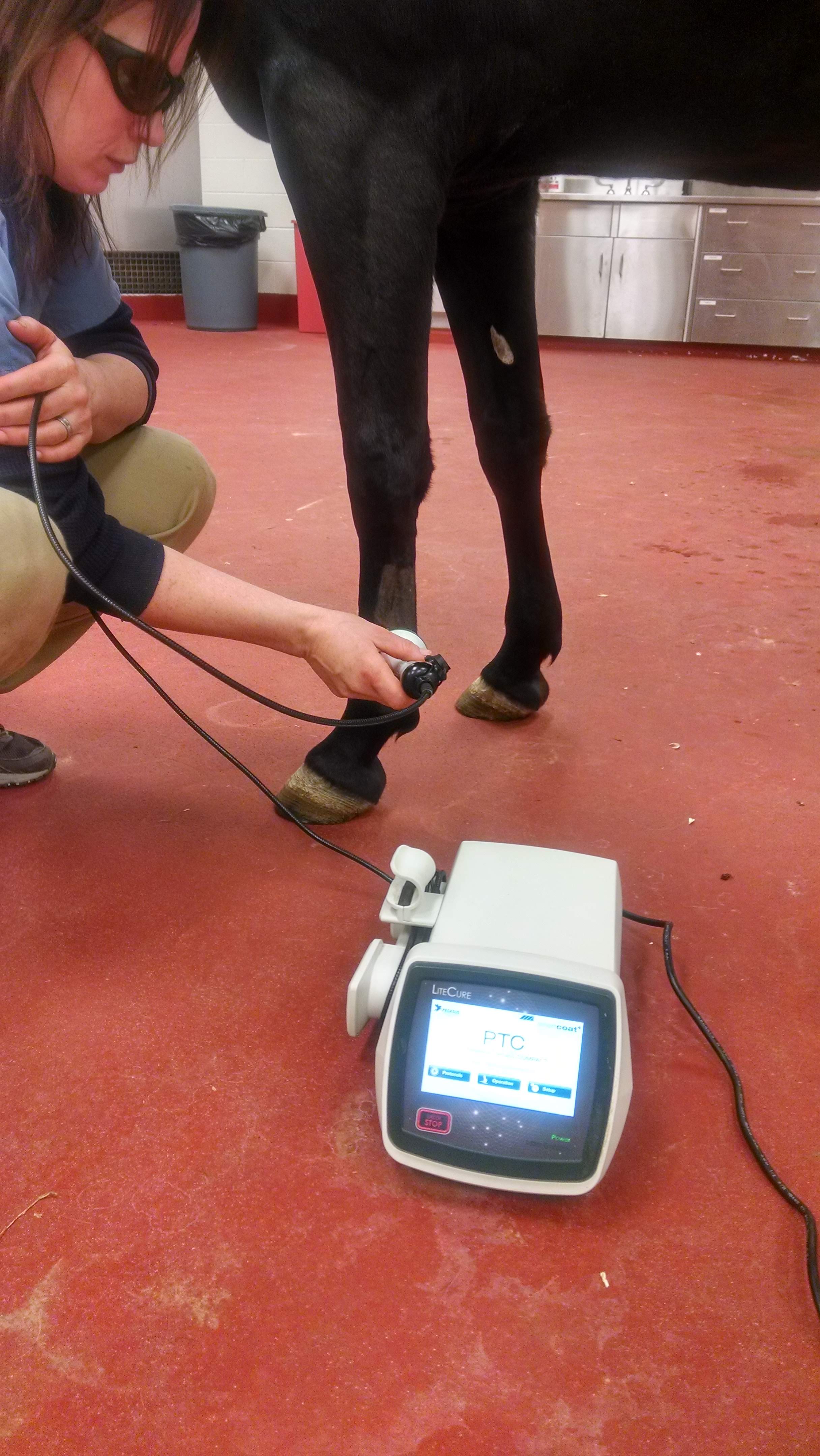Why Equine Therapy is Becoming a Preferred Option for Emotional Health
Why Equine Therapy is Becoming a Preferred Option for Emotional Health
Blog Article
Evaluating the Performance of Laser Therapy in Horse Treatment for Injury Rehab
The assessment of laser treatment's performance in equine injury rehab rests on several elements, including healing time, discomfort reduction, and tissue regrowth. Medical studies recommend noteworthy improvements in problems like tendonitis and osteo arthritis, associated to improved mobile function and elevated ATP production. Veterinarians regularly observe remarkable outcomes with laser treatment compared to standard techniques, positioning it as an essential element in equine care. However, the requirement for continuous tracking and personalized treatment strategies can not be overstated. What particular scientific proof sustains these cases, and how do vets apply these procedures in practice?

Understanding Laser Therapy
Laser treatment has actually come to be a critical tool in vet medication, specifically in the treatment of equine conditions. Understood for its non-invasive nature and effectiveness, laser treatment entails the application of specific wavelengths of light to stimulate tissue repair service and reduce inflammation. This restorative technique is progressively preferred for its ability to speed up the recovery process in horses experiencing a selection of musculoskeletal injuries and persistent conditions.
The key mechanism behind laser treatment is its capacity to improve mobile features. When laser light penetrates the skin, it is taken in by mitochondria, the powerhouse of cells, which brings about increased production of adenosine triphosphate (ATP) This biochemical power increase helps with cellular repair service and regrowth. Additionally, laser therapy promotes vasodilation, enhancing blood flow and oxygen shipment to damaged tissues, hence expediting recovery.
In equine medicine, laser treatment is especially helpful for problems such as tendonitis, osteoarthritis, and wound healing. The technique is admired for its pain-relieving homes, allowing horses to reclaim wheelchair and function more swiftly. Veterinarians also appreciate its minimal adverse effects compared to various other treatment methods, making it a trusted and risk-free option for equine treatment.
Just How Laser Treatment Works
To comprehend just how laser therapy functions, it is important to explore the communication between light power and biological tissues. Laser treatment, also referred to as Low-Level Laser Therapy (LLLT) or photobiomodulation, uses specific wavelengths of light to pass through tissues and boost cellular procedures. The device depends upon the absorption of photons by cell chromophores, largely within the mitochondria, which are important for energy production.
Upon absorption, these photons activate a series of biochemical modifications, boosting mitochondrial feature and resulting in raised adenosine triphosphate (ATP) production. This increase in ATP increases mobile metabolism, promoting cells fixing and regeneration. In addition, laser treatment modulates inflammatory actions by influencing cytokine degrees and decreasing oxidative stress, thus relieving pain and swelling.
An additional substantial facet of laser therapy is its duty in boosting microcirculation. The treatment promotes vasodilation, boosting blood flow and oxygen delivery to broken cells. This helps with the elimination of cellular debris and sustains the proliferation of fibroblasts and collagen synthesis, vital for injury recovery.
Professional Evidence
The effectiveness of laser treatment in equine therapy has been confirmed through different clinical studies, showcasing its healing possible across a variety of problems. A research conducted by Turner et al. (2012) demonstrated that equines treated with low-level laser treatment (LLLT) for ligament injuries showed accelerated healing compared to those getting standard therapies.
In a similar way, research study by Johnson and colleagues (2015) concentrated on equine muscle mass injuries, exposing that laser therapy significantly expedited muscular tissue fiber regrowth and decreased muscle rigidity. Scientific evaluations have revealed that laser therapy can reduce persistent conditions such as osteoarthritis.
Vet Insights
Vet professionals have increasingly identified the value of laser treatment in equine treatment, mentioning both empirical evidence and firsthand experience. Dr. Jane Smith, a leading equine vet, keeps in mind that laser treatment has revealed exceptional efficacy in reducing inflammation and increasing tissue fixing. "In my technique, I've observed much faster recovery times in steeds treated with laser therapy compared to typical methods," she mentions. This sentiment is echoed by Dr. John Doe, who highlights that laser treatment supplies a non-invasive alternative with very little negative effects, making it particularly fit for equine clients.
Veterinarians likewise appreciate the versatility of laser treatment. She directs out that laser therapy can be tailored to the details demands of each equine, guaranteeing ideal Website outcomes.

Practical Considerations
A crucial facet of carrying out laser treatment in equine treatment includes recognizing the practical considerations that guarantee its efficiency and safety. It is important to choose the ideal laser device, as various kinds vary in wavelength, power, and infiltration deepness (Equine Therapy). Veterinarians need to be fluent in these parameters to tailor treatment protocols effectively to every injury kind
Moreover, the frequency and duration of laser treatment sessions require cautious preparation to make best use of therapeutic benefits while reducing any type of prospective damaging effects. Consistent monitoring of the horse's reaction to therapy can lead essential adjustments in the treatment routine. Developing a secure and regulated atmosphere during treatments is also important to protect against accidental direct exposure to laser exhausts, which might hurt both the equine and the handler.
Training and accreditation of workers administering laser therapy are extremely important to make certain correct method and to maintain security requirements. Additionally, resource keeping exact records of each session, including laser setups and observed results, is important for assessing the overall effectiveness of the therapy and for making data-driven decisions.
Conclusion
Laser treatment has emerged as an effective modality in equine injury recovery, using considerable benefits discover here in recuperation time, discomfort relief, and cells healing. Scientific studies highlight substantial enhancements in problems such as tendonitis and osteoarthritis, credited to boosted mobile feature and increased ATP production. Veterinarian observations prove these findings, highlighting premium results contrasted to standard treatments. For optimum results, constant surveillance and individualized treatment methods continue to be vital in leveraging the complete possibility of laser treatment in equine treatment.
Report this page